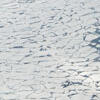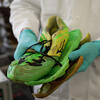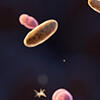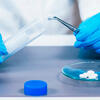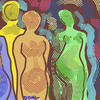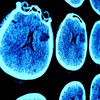You are here
Ten samples that have marked the history of chemistry
11.21.2022, by
Nestled at the heart of the French national museum of natural history (MNHN) in Paris, the Communication Molecules and Micro-Organism Adaptation (MCAM) laboratory, a joint CNRS-MNHN unit, is home to some precious samples. Over a century old, they have just been cleaned and inventoried by the laboratory’s team. Christine Maulay-Bailly, technical manager of the chemical library, presents a selection.

1
Slideshow mode
“This vial contains the first sample of cholesterol. Although everyone today knows about this essential lipid that causes problems when present at excessive levels, its discovery was due to the chemist Michel-Eugène Chevreul, who in 1814 obtained these brilliant crystals from… gallstones. He named the new substance cholesterine; this would subsequently become cholesterol because it contains an alcohol function.”
Cyril Frésillon / MCAM / CNRS Photothèque
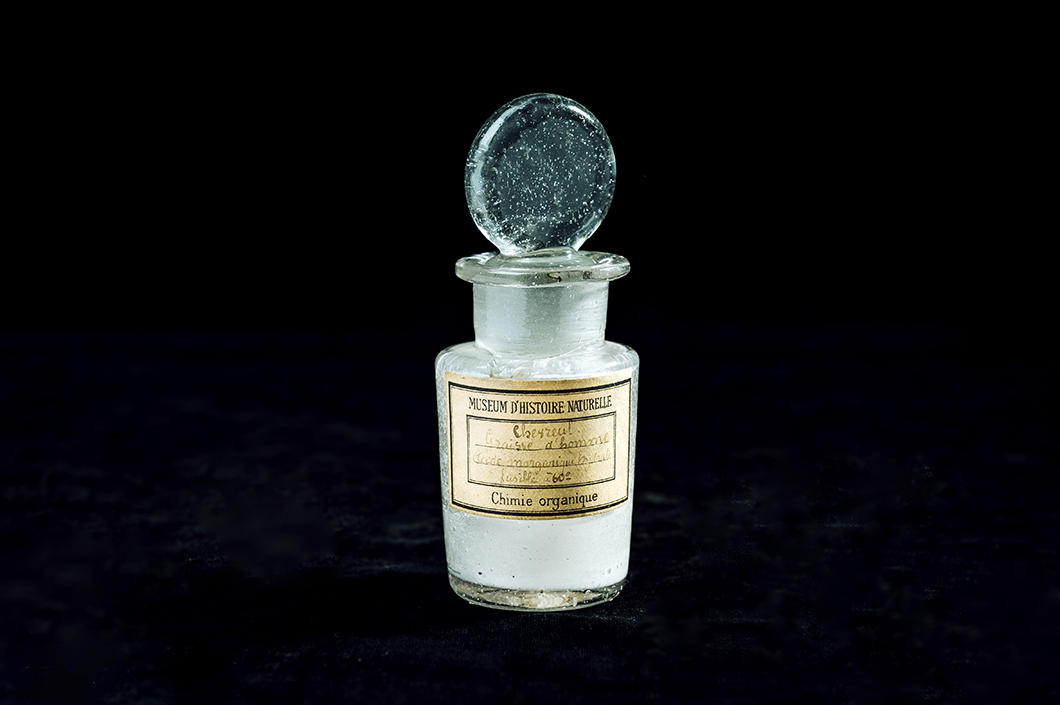
2
Slideshow mode
“In 1813, Nicolas Vauquelin, Professor of Chemistry at the Museum, entrusted his pupil Michel-Eugène Chevreul with the task of studying a soap made from pig fat. His analysis revealed a fatty acid that he named ‘margarine’ (or margaric acid) because of its pearl-like luster (from the Greek ‘margaritis’ which means ‘pearl’). He also tried to prepare margaric acid using other fats: from sheep, humans (as in this photograph), jaguar, geese or cattle. It would subsequently turn out that this discovery was in fact a mixture of two fatty acids.”
Cyril Frésillon / MCAM / CNRS Photothèque
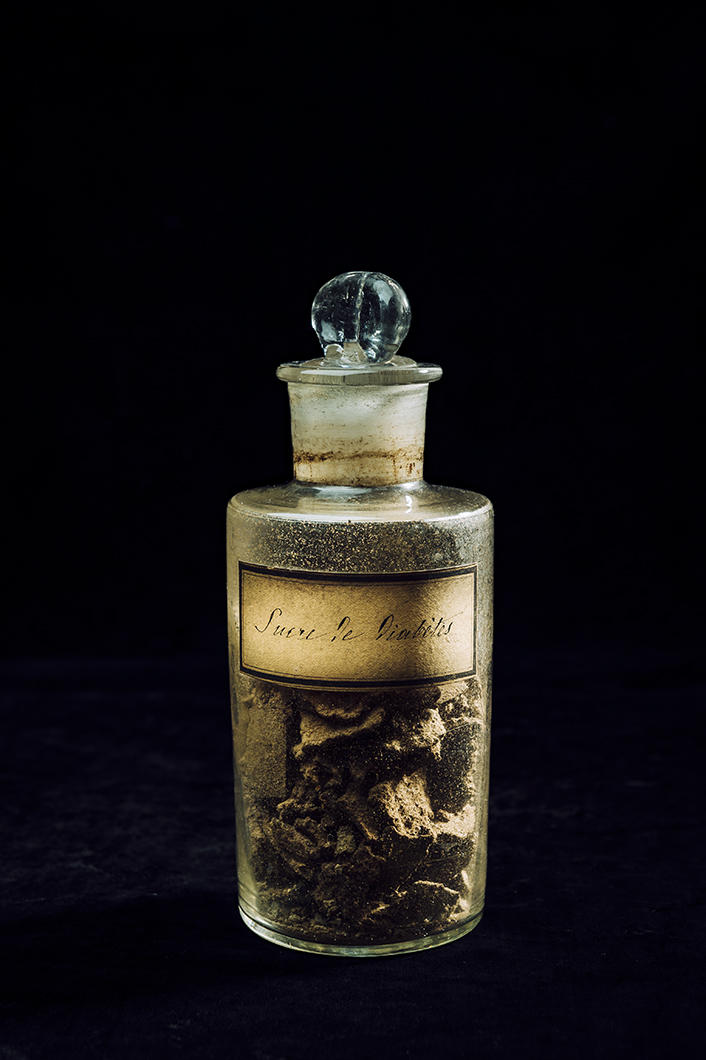
3
Slideshow mode
“From the urine of a diabetic patient, Chevreul obtained this substance that he called ‘diabetic sugar’ because it formed small crystals similar to those found in grape sugar. Having processed it many times, he managed to obtain crystals with properties (solubility, taste, etc.) similar to those of grape sugar, thus confirming his initial intuition. In fact, these sugars were one and the same, i.e. the glucose that we know today.”
Cyril Frésillon / MCAM / CNRS Photothèque
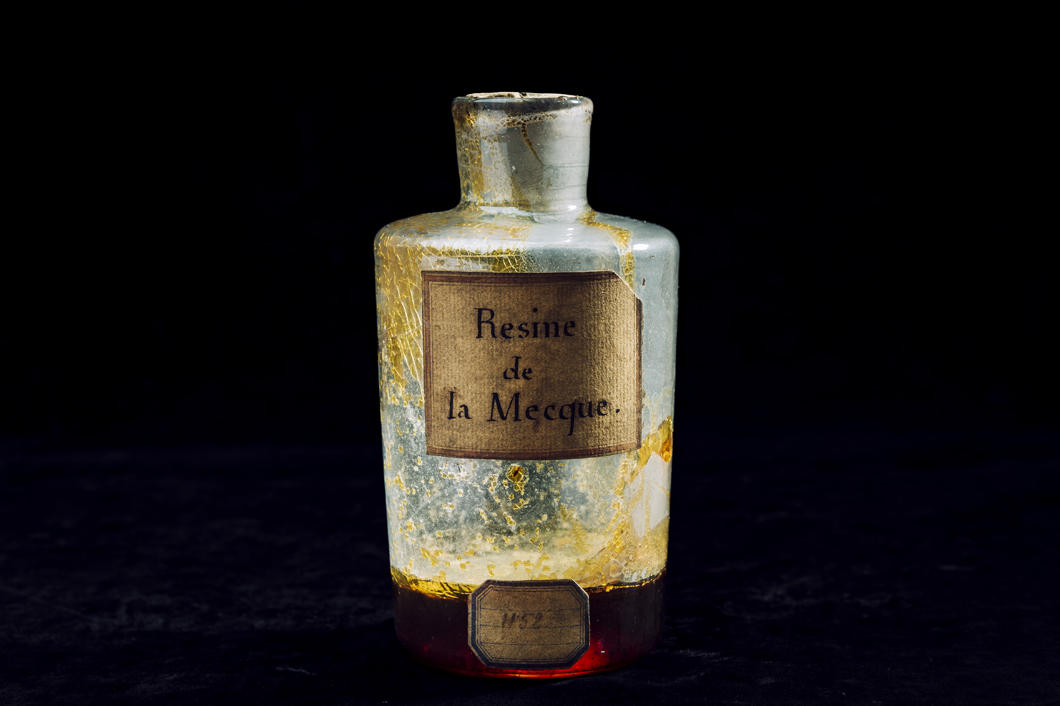
4
Slideshow mode
“From this resin, probably studied by chemists at the Museum in the early 20th century, balm of Judea – also referred to as balm of Mecca or balm of Gilead – was extracted. With a gold shimmer, a citrus odour and bitter taste, this substance was used in ancient Greece and Rome as a perfume and medicine, especially to heal wounds and treat stomach or intestinal pain.”
Cyril Frésillon / MCAM / CNRS Photothèque
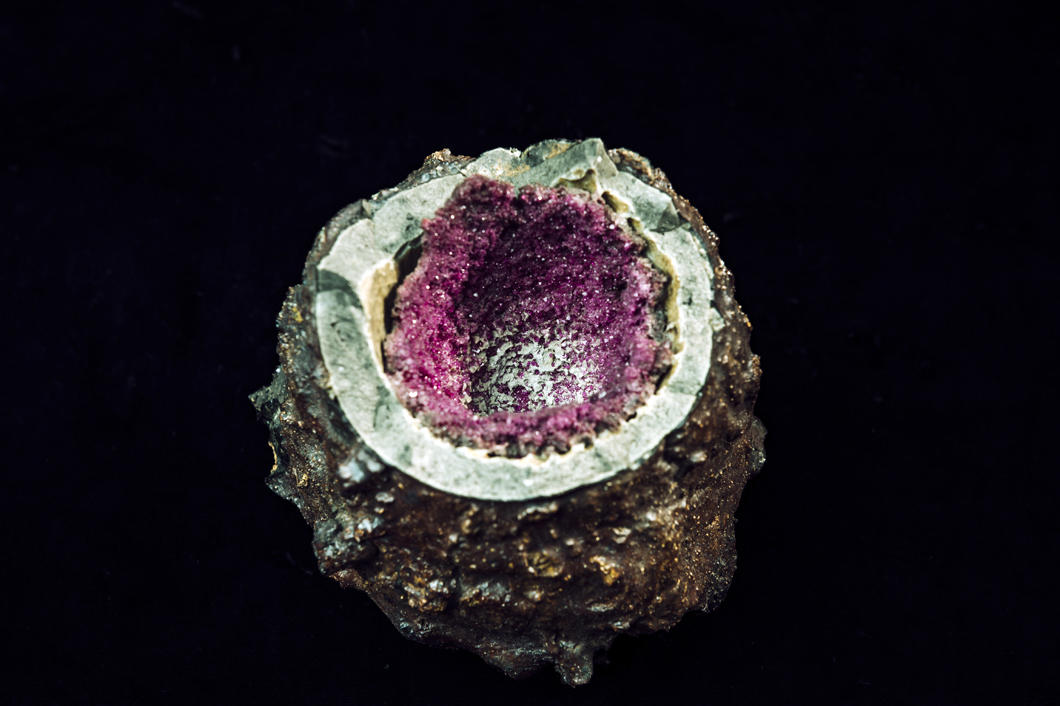
5
Slideshow mode
“These are the first synthetic rubies (shown in their crucible) that were used historically in watch movements. It was in the chemistry laboratory at the Museum that, around 1875, Edmond Frémy and his colleagues Charles Feil and then Auguste Verneuil, succeeded in synthesising ruby, a rare and expensive gemstone much sought after for its extreme hardness. Frémy made a synthetic ruby necklace for his wife, which was much admired during an evening at the Elysée Palace.”
Cyril Frésillon / MCAM / CNRS Photothèque
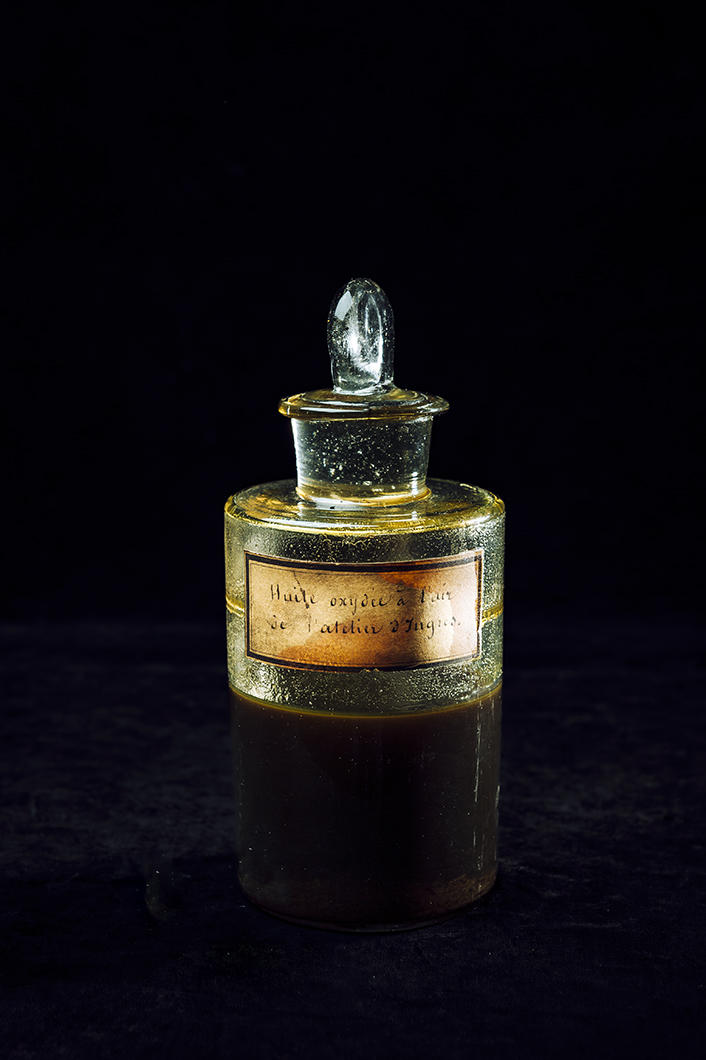
6
Slideshow mode
“Michel-Eugène Chevreul also tried to analyse numerous oils and fatty substances. These included a treasure in our chemical collection, which is a vial of oil from Ingres’ workshop. This oil served to bind the pigments used by Jean-Auguste-Dominique Ingres, the famous 19th century French painter, who may even have used it – who knows – to paint La Grande Odalisque, one of his masterpieces that inspired so many painters after him.”
Cyril Frésillon / MCAM / CNRS Photothèque
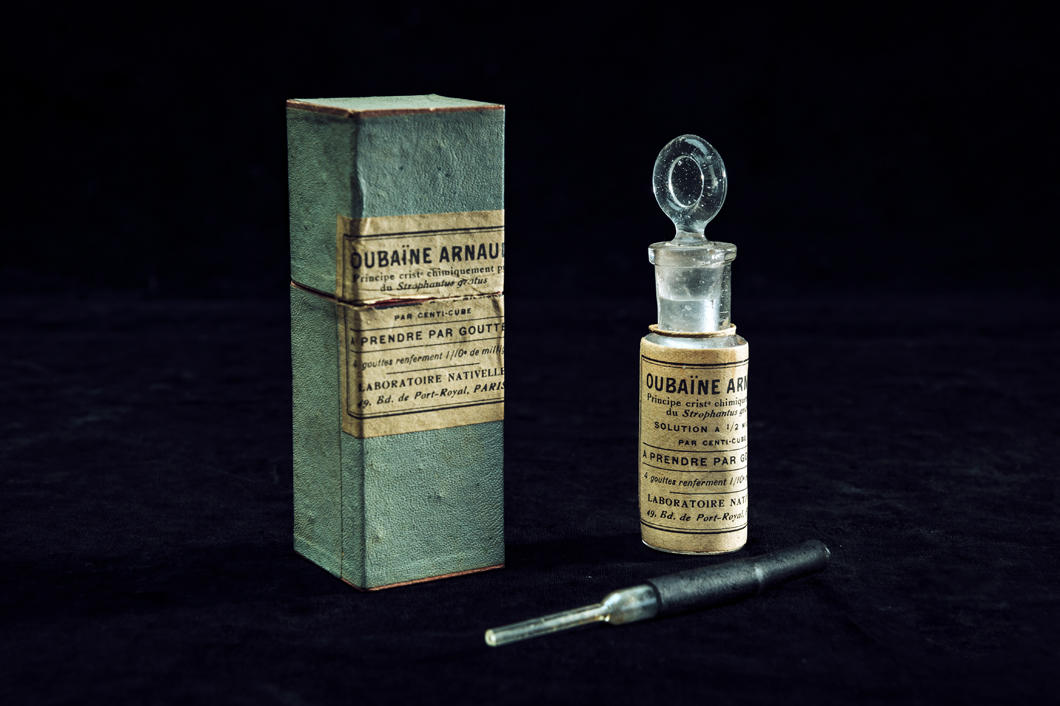
7
Slideshow mode
“From a celebrated traveller called Révoil, the chemist Léon Albert Arnaud received poison from arrows from Somalia, some of which were coated with ‘waba’, a deadly substance obtained from Acokanthera plants. In 1888, Arnaud isolated the glucoside responsible for its effects, which he called ouabain; this would subsequently become a medicine used to treat acute cardiac failure. Indeed, it has been known since the 16th-century alchemist Paracelsus that ‘it is the dose that makes the poison’.”
Cyril Frésillon / MCAM / CNRS Photothèque
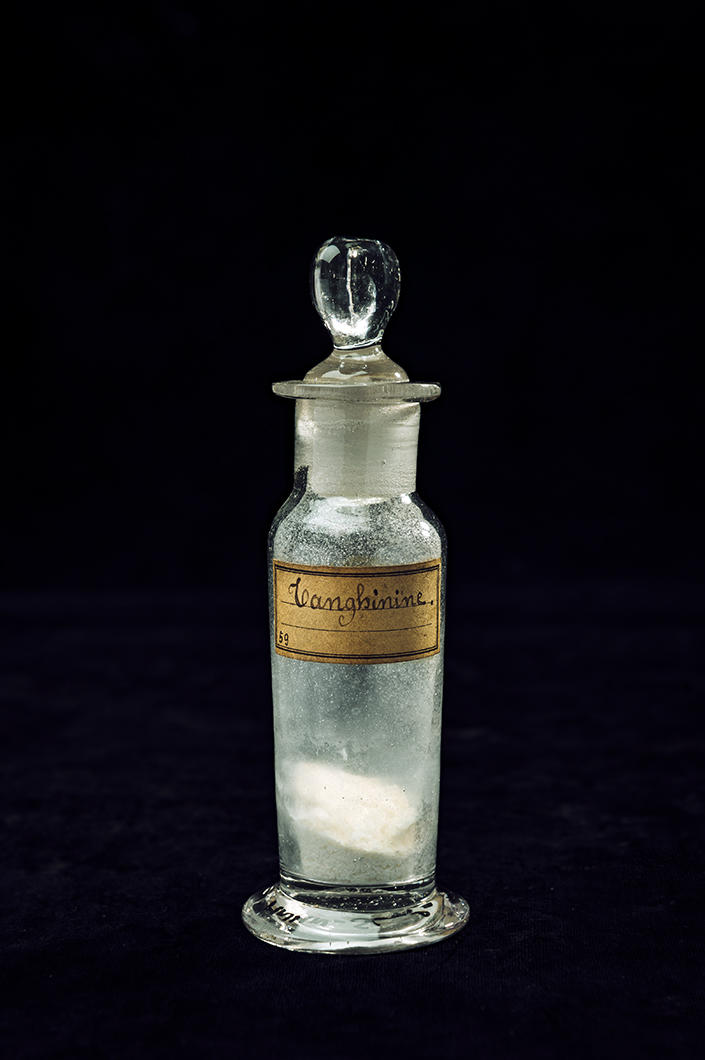
8
Slideshow mode
“Another poison studied in 1889 by the chemist Léon Albert Arnaud was tanghinin, a molecule with toxic effects on the heart which is found in the Tanghinia venenifera plant also known as ordeal tree. These extracts are used in Madagascar to put individuals suspected of witchcraft to the test.”
Cyril Frésillon / MCAM / CNRS Photothèque
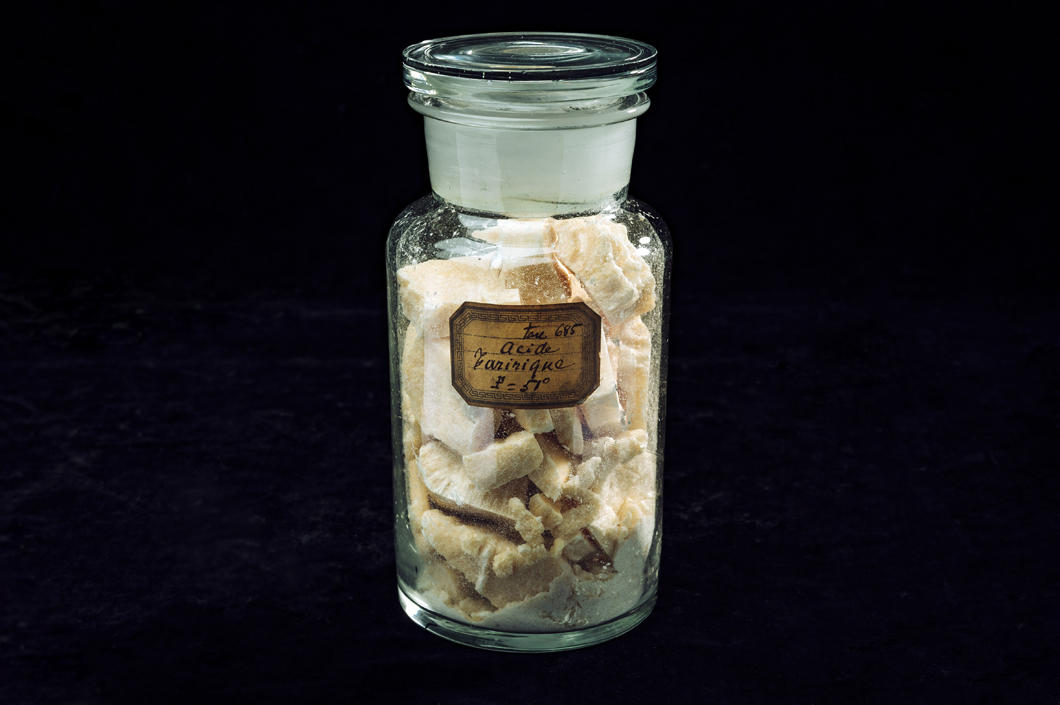
9
Slideshow mode
“Tariric acid is the first acetylenic fatty acid – comprising a triple carbon-carbon bond – to have been evidenced in plants. Once again, it was Léon Albert Arnaud who managed to isolate it in 1892, this time from tariri seeds from a plant called Picramnia guianensis which originates from the Guianas.”
Cyril Frésillon / MCAM / CNRS Photothèque
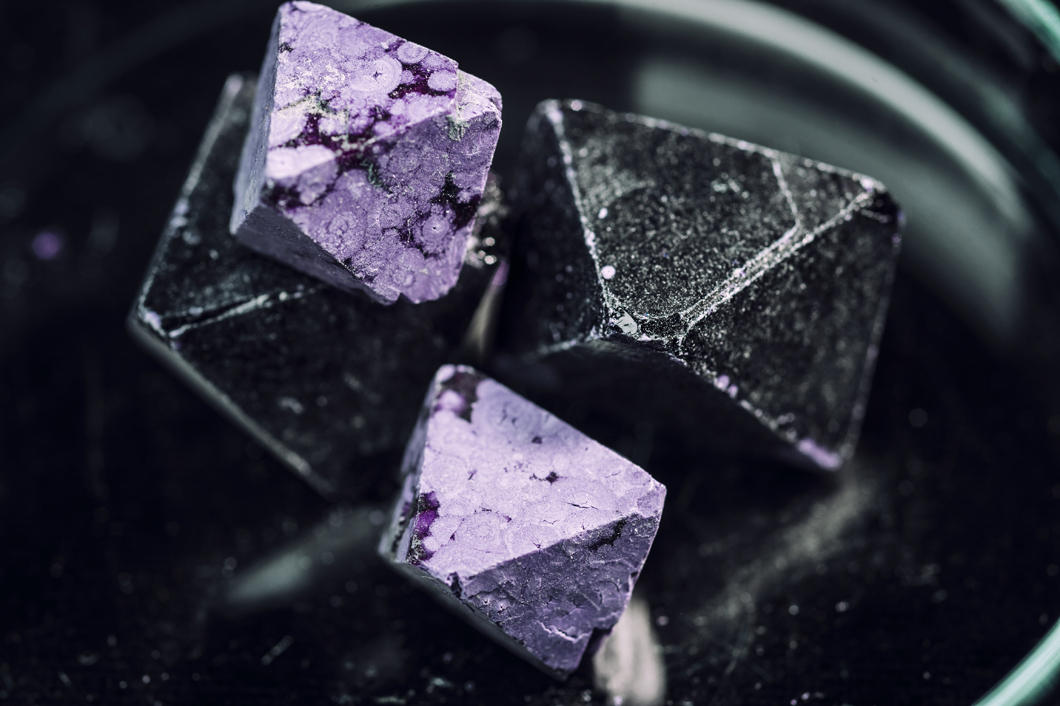
10
Slideshow mode
“Chrome alum, which takes the form of purple octahedral crystals, is obtained via a very rare mechanism: by evaporating together a solution of alum and another of chrome, the two components combine instead of crystallising separately. The result, illustrated by this sample, estimated to date from the end of the 19th century, shows that the crystals are much more strongly coloured than the two elements taken in isolation.”
Cyril Frésillon / MCAM / CNRS Photothèque
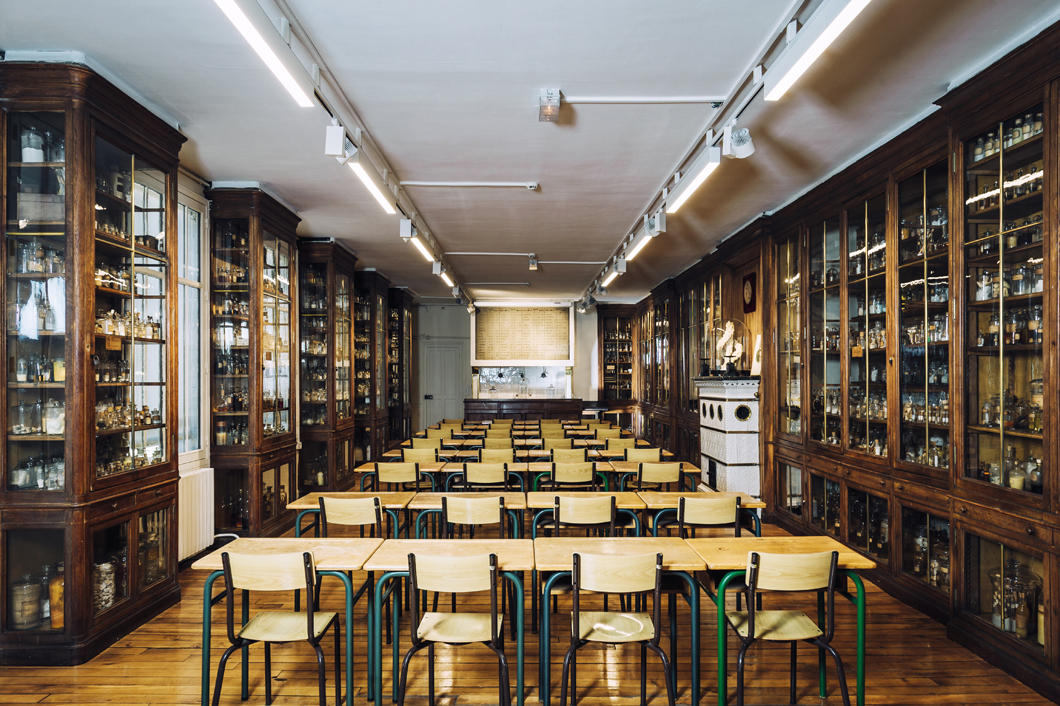
11
Slideshow mode
“This is the historic lecture room of France’s first school of chemistry, created at the Museum by Edmond Frémy in 1864 and transferred to rue Buffon in 1872; the room was restored in 2021. The 7381 samples in our heritage collection are on display in the showcases. Such a rich heritage deserves a setting commensurate with its importance! We are delighted that we can now make it available to visitors and students.”
Cyril Frésillon / MCAM / CNRS Photothèque
Explore more
Matter
Article
10/27/2025
Slideshow
07/17/2025
Article
07/07/2025
Article
03/26/2025
Slideshow
03/19/2025
Chemistry
Slideshow
07/17/2025
Article
11/15/2024
Video
03/18/2024
Video
07/20/2023
Article
04/24/2023
Medicine
Article
05/25/2023
Article
02/26/2020
Article
10/23/2019
Article
05/24/2019
Article
02/22/2018






